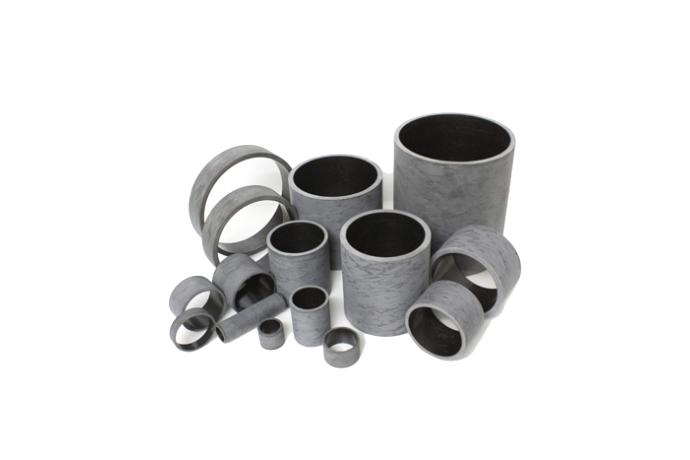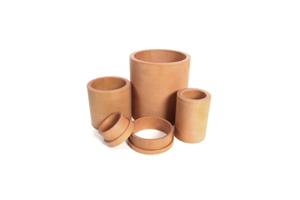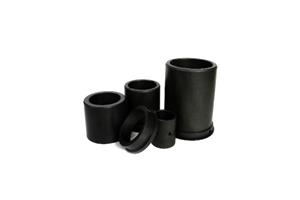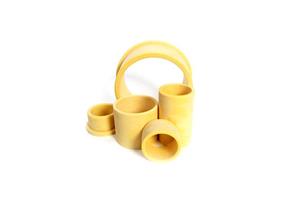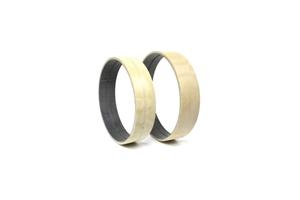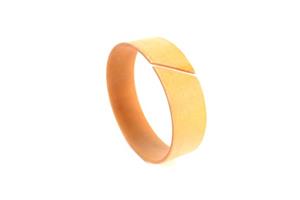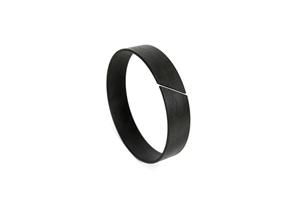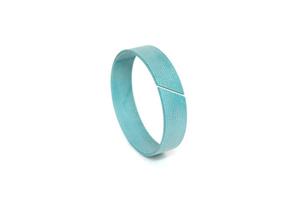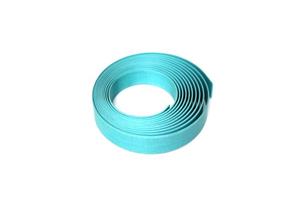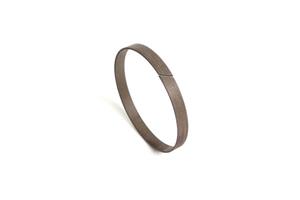■ Material structure
MOSTUF NW bearing has a twin layer structure. The inner layer is composed of special woven synthetic fiber and PTFE. The outer layer has high strength continuous glass fibers which are impregnated with epoxy resin in special filament winding at specific angles to provide strength
■ Features
No need for lubrication
Maintenance-free in dry operation
Self-lubricating design
Low coefficient of friction and wear-resistant
High load-carrying capacity
High PV capacity
Negligible stick-slip
Corrosion-resistant
Non-metallic material

■ Properties
|
|
|
Density [g/cm3] |
Permissible load [MPa] |
Max. Sliding speed [m/s] |
Max. PV value [MPa.m/s] |
Coefficient of friction |
Thermal expansion [10-5/℃] |
Thermal conductivity [W/MK] |
Water absorption [%] |
Temperature [℃] |
|
|
static |
dynamic |
||||||||||
|
NW |
|
2.03 |
210 |
140 |
0.10 |
2.80 |
0.03~0.20 |
1.3~2.9 |
0.40 |
0.11 |
-100~160 |
■ Friction and Wear characteristics
Friction and wear characteristics of the bearing is subjected to the influences of various factors such as
- Specific load, PV factor, shaft material, surface roughness of shaft, temperature, other environmental factors(e.g. dust, lubrication)
Fig 2. shows the friction characteristics under 140MPa, 0.0199m/s and non-lubricated condition with 1,000,000cycle. The initial static coefficient of friction in steady state is between 0.038 to 0.047. The coefficient of friction on MOSTUF NW bearing is 0.03~0.20. It showed a tendency of coefficient of friction decreasing as the load is increased.
Fig 3. shows that the wear resistance with 1,000,000cycles under the same condition. The initial wear in the start-up stage show relatively rapid increase as the self-lubricating boundary layer is created. Once transfer film is formed on the test shaft, the coefficient of friction rapidly decreased and reached a stable state, as did the wear rate maintaining a steady state until the test was completed.

